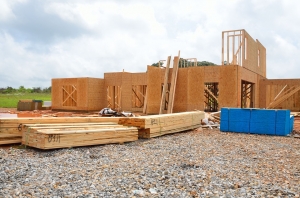
City leaders have lots of priorities, but perhaps none more critical than affordable housing!
Teachers, medical personnel, public safety officers, first responders and others need to be able to live downtown, but because urban real estate is so expensive, it is almost impossible for them to find affordable housing. City leaders know they must change that reality.
Residents in cities that lack good public transportation have incredibly high transportation costs. The costs are so high there is a huge disincentive to moving to the city. Auto-intensive cities such as Austin, Orlando and Las Vegas have transportation costs that are prohibitive. Because of that, it is almost impossible to hire people whose jobs require them to locate and find living accommodations downtown. City officials are continually reaching out to potential private-sector partners to help them remedy this serious problem.
 There are all kinds of successful public-private partnerships (P3s) related to affordable housing projects. And, city leaders are taking long looks at P3s. The success of a Mountain View affordable housing public-private partnership in California has led other cities to pursue affordable housing programs using a variety of funding mechanisms—tax credits, low-interest loans, grants, incentives and the transfer of city-owned property to developers. And, recent voter-approved affordable housing bonds and taxes in places like Los Angeles, Calif., Greensboro, N.C., Boston, Mass. and Portland, Ore. will soon announce funding for construction of affordable housing units.
There are all kinds of successful public-private partnerships (P3s) related to affordable housing projects. And, city leaders are taking long looks at P3s. The success of a Mountain View affordable housing public-private partnership in California has led other cities to pursue affordable housing programs using a variety of funding mechanisms—tax credits, low-interest loans, grants, incentives and the transfer of city-owned property to developers. And, recent voter-approved affordable housing bonds and taxes in places like Los Angeles, Calif., Greensboro, N.C., Boston, Mass. and Portland, Ore. will soon announce funding for construction of affordable housing units.
The New York City Economic Development Corporation and the state’s Department of Housing Preservation and Development have announced plans to redevelop the former Spofford Juvenile Detention Center in the Hunts Point section of the Bronx. The five-acre site will soon offer affordable housing, recreational venues and retail space. Developers of the $300 million project plan to demolish the detention center and replace it with 740 units of affordable housing, a 52,000-square-foot public plaza, 49,000 square feet of industrial space, 48,000 square feet of community facility space and 21,000 square feet of retail space.
The city of Berkeley is experiencing homelessness and affordable housing crisis. As part of its “Step Up Housing” initiative, the city will issue a request for proposals (RFP) to select a developer to create up to 100 small residential units, AKA “micro units”, on small city-owned lots. These units will be made available to formerly homeless and other very low income residents.
In November 2016, voters in Ashville, N.C. approved $25 million in affordable housing bonds. $10 million is available to provide additional support for the city’s Housing Trust Fund, which makes low-interest loans to incentivize developers to build affordable housing. The remaining $15 million will be used to repurpose city-owned land for affordable housing. Currently, three sites have been proposed for study as options for developing affordable housing. The studies, which will utilize outside consultants, will include environmental assessments, appraisals, surveys and conceptual designs.
Just this month, the New York City Department of Housing Preservation and Development announced a plan to rebuild from Hurricane Sandy and protect residents from future floods. Part of the $481 million plan includes proposed affordable housing projects, including the development of five acres of vacant city-owned lots on Rockaway Beach Boulevard. In addition to affordable housing units, the mixed-use development will include retail and community facilities.
The city of Detroit recently issued an RFP for developers interested in multi-family housing in the former Transfiguration School on the east side. The RFP is designed to attract developers capable of planning a mixed-income development that contains 15-25 residential units with 20 percent designated as affordable housing. Proposals are due on May 22, 2017.
Opportunities are not the problem. Construction firms interested in partnering with cities for affordable housing will find a huge abundance of opportunities. The problem, and perhaps the question, is this—which construction firms want to build this type of housing? If these firms step up soon, the companies are likely to find city leaders waiting with open arms.
